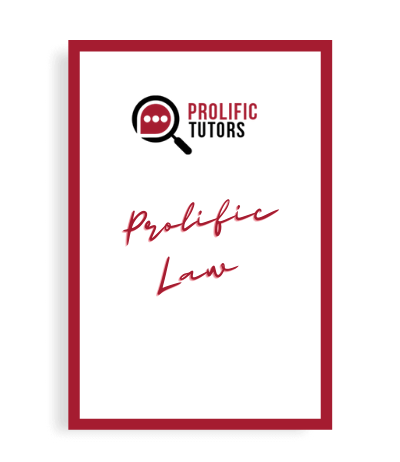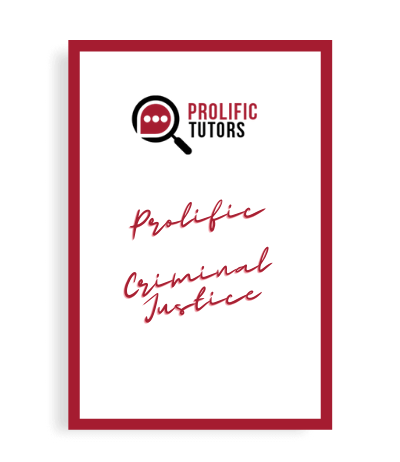Description
*You’ll get two versions of this solution with your purchase.
Exam 2
Due Sunday
CCJ 5078 – Computer Applications in Criminal Justice
For this exam, you must complete the two essay questions below. You must type your answers in a Word document, and submit the document on Canvas by the due date. This exam is worth 40 points. To receive full credit, you must provide complete answers for each part of the question, draw on all relevant readings and lecture notes, and display graduate-level writing ability including proper grammar and punctuation.
You must cite any sources that you draw on, which must include the course readings and lecture notes (where relevant). If citing the lecture notes, add “(lecture notes)” to the end of the sentence. When citing the course readings, cite the authors’ last names and the year of the publication. You can include information from outside readings, but this is not necessary (except for question 2 where it is required), and including outside readings will not be a substitute for citing all the relevant readings from the course. If you include outside readings, cite the authors’ last names and the year of the publication in the text of your answer. Then add a separate page at the end of your exam that includes the bibliographic reference(s). Guidelines for citations and bibliographic references are included below.
Keep in mind that these are essay questions, not short-answer questions. Your answers should be thorough and of sufficient depth for a graduate course. Finally, both of your answers must adhere to the following format guidelines:
- All answers must be written in 12 pt. Times New Roman font, and double-spaced.
- All pages must have a margin of 1″ on all sides.
- Label the beginning of your answer with the corresponding question number, but do not type the actual question in your document.
- Type your name in the header of your document.
- Do not include a title page. The first page of your document should begin with your first answer.
- There is not a length requirement, but successful answers are typically about 3-4 pages each.
ESSAY QUESTIONS
- The increasing use of information technology in the criminal justice system is often assumed to be a positive development. However, some of the readings have touched on some negative, unintended consequences of this increased use of new technology. For this essay question, you must identify two negative consequences of the increased use of information technology in criminal justice. Describe each issue and explain how it has had a negative impact. Then thoroughly explain how you think each negative impact could be overcome.
- Advances in technology continue to revolutionize policing in important ways. Three key advancements that are being used today are body-worn cameras, license plate readers, and gunshot detection systems. You must choose one of these three technologies and find two research articles that evaluate the effectiveness of the technology for policing. In your answer you must 1) describe the technology, 2) describe the findings from the two articles about whether or not the technology is effective, and 3) discuss any weaknesses or problems with the technology. Additional notes:
- You must use Google Scholar to find the research articles as instructed below. They must be articles from academic research journals. Do not simply search the Internet to find information or you will lose points.
- At the end of your paper, include a full bibliographic reference for your two articles. You must use the citation and referencing instructions listed later in these instructions or you will lose points. Read those instructions carefully, even if you think you already know how to appropriately use citations and references.
Instructions for Finding Journal Articles
There are many different ways to find relevant academic journal articles. For this assignment, it may be best to use an expansive search rather than a highly focused search. Therefore, we will use Google Scholar. If you are searching from off-campus, it is imperative that you follow the instructions below rather than simply going straight to Google Scholar. If you do not follow these instructions and log-in with your FSU credentials when asked, you will not have free access to the articles and reports.
Step 1 – Set up Google Scholar to use FSU subscriptions
- Go http://scholar.google.com
- Click on the Settings menu on the right.
- Click on Library links.
- Type Florida State University in the box that appears.
- Click on the blue Search button.
- Click in the check box next to “Florida State University- Find It @ FSU” (Not Cengage Gale Full Text)
- Click on Save
- Scholar should now recognize you as an FSU patron
- Instruction video: http://myweb.fsu.edu/bstults/courses/ccj5078/google_scholar.html o
Step 2 – Find relevant articles
- Enter your search terms in the box (e.g. “license plate reader policing”).
- View the results of your search and scan the titles for something interesting.
- When you find a potential article, click the html link, the PDF link (if available), or the “Find it @ FSU” link. This should take you to a website where you can view the abstract and find a PDF or full online version of the article. Every site is a little different, so just look around until you find a link to the PDF file.
- Review the article to see if it will be useful. Most importantly, it needs to say something about whether or not the technology is effective at improving policing.
- Do not use sources that are books, dissertations, or that are published by an association (e.g. American Society of Criminology), as they are likely to be conference presentations.
Instructions for Citation and Reference Style
There are numerous different styles for providing citations and bibliographic references. This assignment will use an adaptation of the APA Citation Style. Guidelines are provided below.
Referencing citations in the text of the paper
In the text of your paper, the first time you refer to an article, you must provide a citation that refers the reader to an entry in your bibliographic references. Use the following examples:
- for articles by a single author The last name of the author and the year of publication are inserted in the text at the appropriate point. … as argued in a classic study (Simon, 2005). If the name of the author appears as part of the narrative text, cite only the year in parentheses. Simon (2005) argued that…
- for works by a multiple authors
When a work has two authors, always cite both names every time the reference occurs in the text. In parenthetical material join the names with an ampersand (&).
… as has been shown (Leiter & Maslach, 1998) When names are included in the narrative text, join the names with the word “and”. As Leiter and Maslach (1998) show… When a work has three, four, or five authors, cite all authors the first time the reference occurs. Kahneman, Knetsch, and Thaler (1991) found …
In all subsequent citations, include only the surname of the first author followed by “et al.” (Latin for “and others”) and the year of publication.
… as found by Kahneman et al. (1991).
… as found in a key study (Kahneman et al., 1991).
Bibliographic references
At the end of your paper, you must include a list of bibliographic references. You must include a reference for each of the articles that you cite in your paper. They should be in alphabetical order according to the first author’s last name. This reference page will not be included as part of the 4-5 pages. All references must include the following:
- authors’ last names and first initials
- year of publication (in parentheses)
- title of article (in double-quotes)
- title of journal (in italics)
- volume number
- page numbers
- use a hanging indent, as shown below
Johnson, G. (2008). “The effects of regret in escalation of commitment.” Organizational Behavior and Human Decision Processes, 105, 221-232. Smith, M., R. Jones, & A. Stevens. (2010). “Self control and white Collar crime.” Criminology, 102, 541-566.

![[Solved] CCJ 5708 Exam 2 - Computer applications in criminal justice](https://prolifictutors.com/wp-content/uploads/2022/08/Solved-CCJ-5708-Exam-2-Computer-applications-in-criminal-justice-570x658.png)
![[Answer] CRJ748 -Global and Domestic Terrorism Summary and Ideas on combating Hezbollah via an Alternative Narrative](https://prolifictutors.com/wp-content/uploads/2022/07/Answer-CRJ748-Global-and-Domestic-Terrorism-Summary-and-Ideas-on-combating-Hezbollah-via-an-Alternative-Narrative.jpg)

![[Solved] CCJ 5285 - Midterm Exam - Integrating Gottfredson and Hirschi’s general theory of Crime and Tom Tyler's explanation of why people obey the law](https://prolifictutors.com/wp-content/uploads/2022/08/Solved-CCJ-5285-Midterm-Exam-Integrating-Gottfredson-and-Hirschis-general-theory-of-Crime-and-Tom-Tylers-explanation-of-why-people-obey-the-law.png)



Reviews
There are no reviews yet.